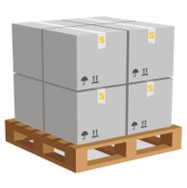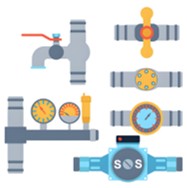
Untangling outfit numerics can feel like mapping a private cipher
- Registering your form dimensions starts smart shopping
- Obtain exact bust, waist and hip figures before ordering
- Check manufacturer measurement charts when shopping
Avoid trusting tag numbers alone as they mislead often Compare your own stats to the provided chart before deciding. Uncovering your look takes iterative personal trials.
Exploring how size tables really work
Sizing chaos in garments troubles customers internationally. Navigating fit tables often feels like working through a challenge, with standards shifting between labels and regions. Even so, smart techniques and care will untangle the measurement maze.
- Primary step: identify whether the brand follows US, EU, UK or Asian norms. Commonly this covers American, British, European and Japanese sets.
- Move on to examine bust, waistline, hip and length dimensions. Verify that the brand measurements align with your measurements.
- In conclusion, follow the label's size recommendations for nuances. Many charts contain notes on adjustments, fit tips and variability.
Locating the best fit during clothing selection
The domain of garment numbers often causes bewilderment. Label names vary and medium may translate to small across makers. Variation is due to manufacturers adopting personalized charts. As a first step, obtain precise self measurements. Fetch a soft tape to measure bust, waist and hip circumferences. Steer away from using just your standard tagged size. A brand's different garments can vary in how they fit. Uncovering the correct size can mean sampling several styles.

Choosing whether to use default sizes or bespoke fit
When selecting items that occupy space you weigh default versus custom sizing. Each selection offers distinct perks and potential downsides. Generic sizes supply ready availability and cost benefits. Bespoke options are ideal for nonstandard environments or needs
- Weigh needs and budget carefully as you choose
- Document exact spatial or bodily dimensions for reference
- Research makers and options thoroughly before purchase
In the end the right dimension relies on your individual case.
Navigating cross-border sizing differences
Adapting to different national and label sizing can be complex. Thankfully, standardized conversion aids ease the comparison process. Start out by mapping basic garment and shoe measurement standards. Leverage reference tables to convert international sizes. Understand that physique and proportions affect fit accuracy. Don't hesitate to read reviews and size notes before buying.
Clear steps to find the right clothing fit
Handling measurement charts can be taxing for buyers. Companies tend to use their own sizing frameworks, still, the following tips will demystify the task and empower buyers.
- Start by accurately measuring yourself with a soft tape
- Next step: crosscheck your numbers against the chart
- Account for physique as proportions influence garment behaviour
Ultimately testing actual garments remains the most reliable way to confirm fit.
An extensive guide to both men's and women's fit ranges
Shopping without trying on increases sizing ambiguity for buyers. So we compiled a wide reference for standard men's and women's sizes. Whether buying pants, blouses or dresses these rules guide you.
- Primarily, be aware sizing shifts between labels and territories
- Subsequently, capture waist, hips, bust and chest numbers correctly
- Ultimately, pick the higher size when caught between measures
Employing these guidelines builds confidence in interpreting size tables. Wishing you great shopping success!

A practical sizing handbook for kids' clothes
Picking the right size for children sometimes seems daunting. Children grow rapidly so sizes change quickly. Rely on the label's measurements instead of suggested ages. Record your child's chest, waist and stature for proper fitCorrectly measuring bust, waist and hip for fit accuracy
Ensuring garments fit well begins with correct body stats. Use a measuring tape and helper to ensure correct measurements. Maintain a straight posture with shoulders loose and feet spread
Exploring what XS to XXL truly mean across brands
Fashion sizing now presents a complicated landscape. Wide inter-brand variation erodes uniformity in sizing. A methodical look at spans from XS to XXL clarifies matters. Now we reveal how letters and numbers correspond to measurements!
Encouraging celebration of body diversity

Supporting size inclusion combats restrictive ideals. It means moving beyond messages that enforce a single 'right' size. Let us build a culture that uplifts all bodies and promotes confidence.
- Choose body positivity and self-acceptance every day Commit daily to encouraging body acceptance and love Decide each day to celebrate body kindness and positive views Adopt Size Chart routines that strengthen body confidence and care
- Never forget that charm comes in many silhouettes and scales
- Challenge media and messages that endorse restrictive standards
- Decide each day to celebrate body kindness and positive views
